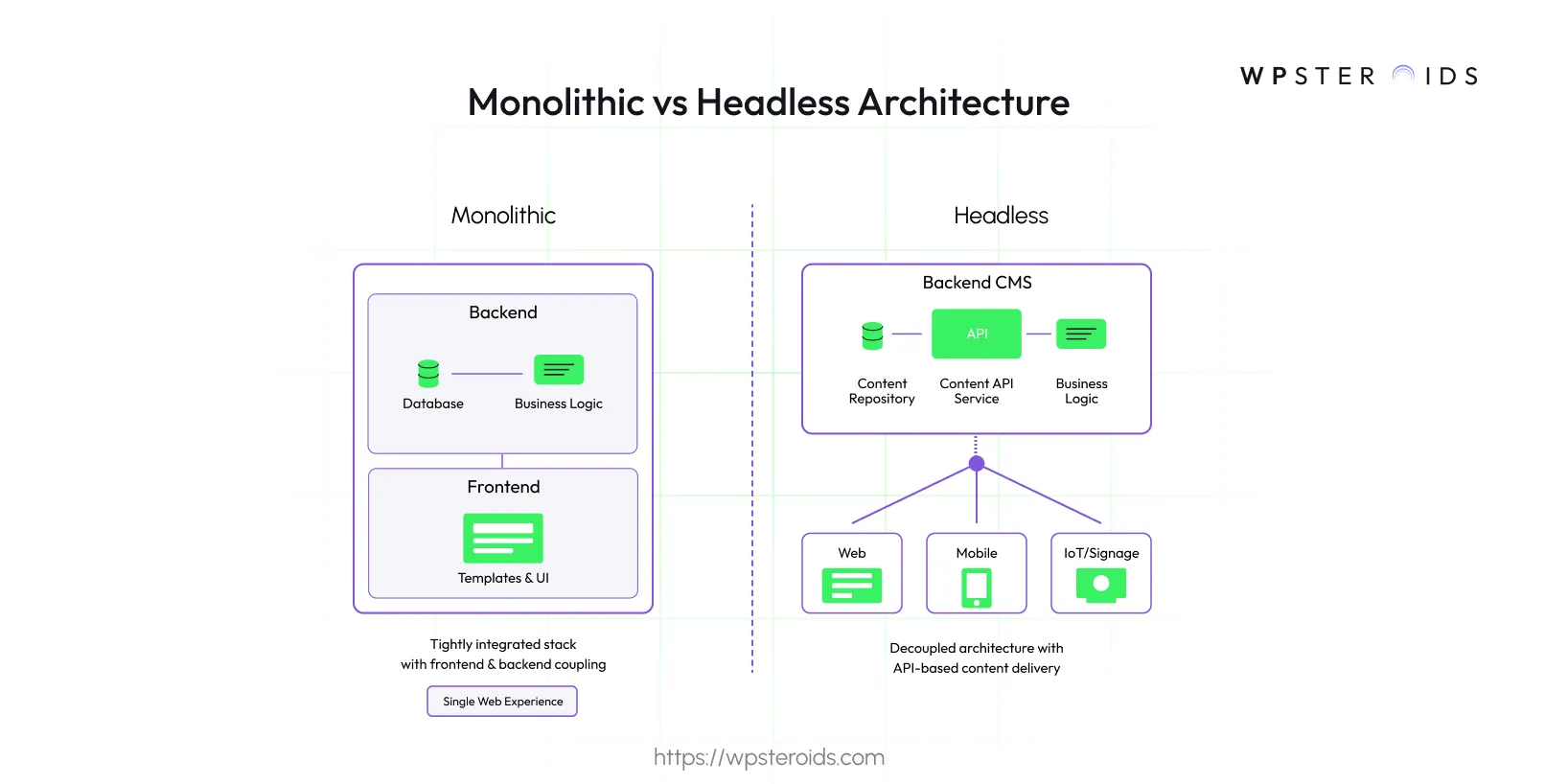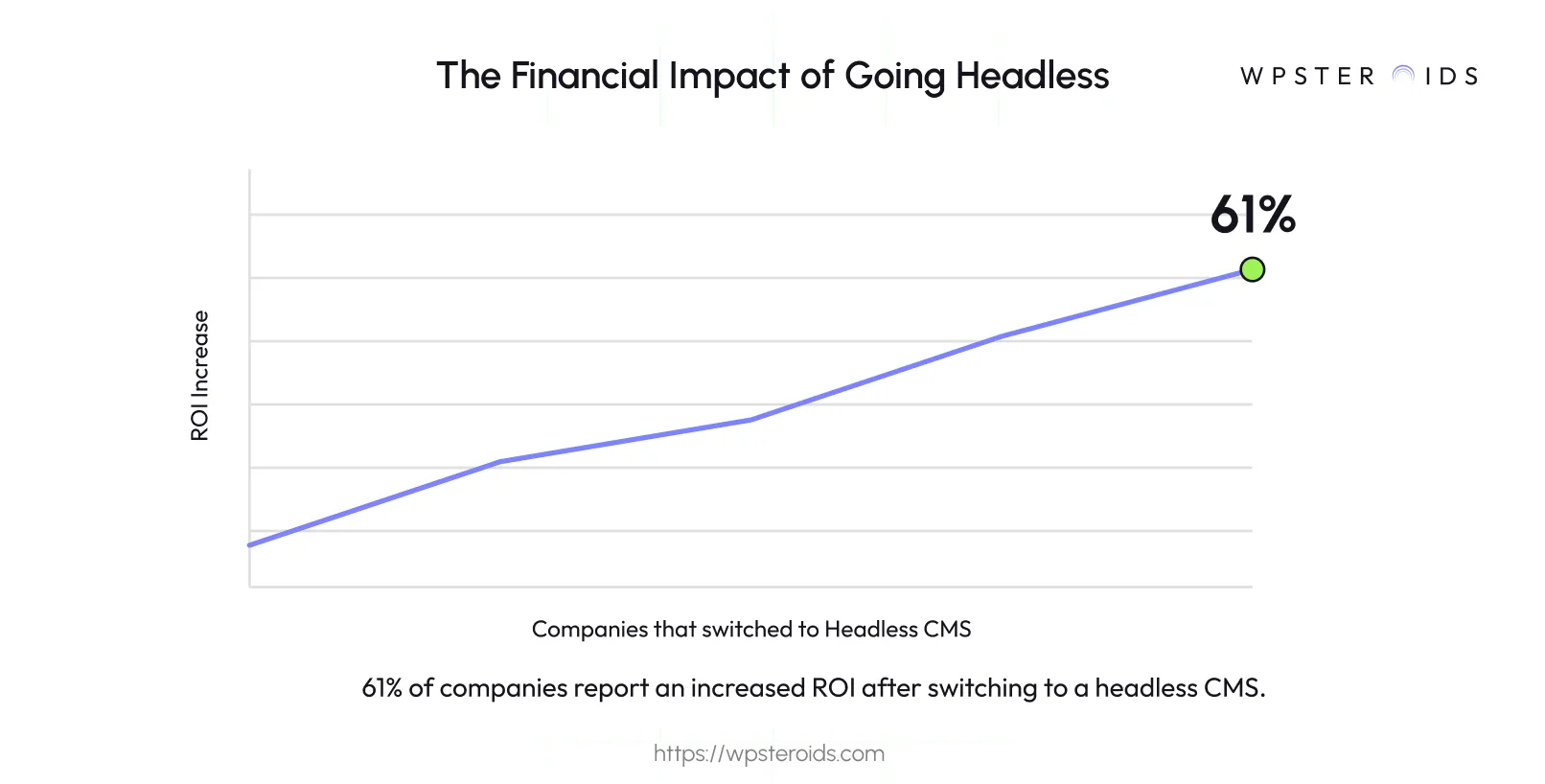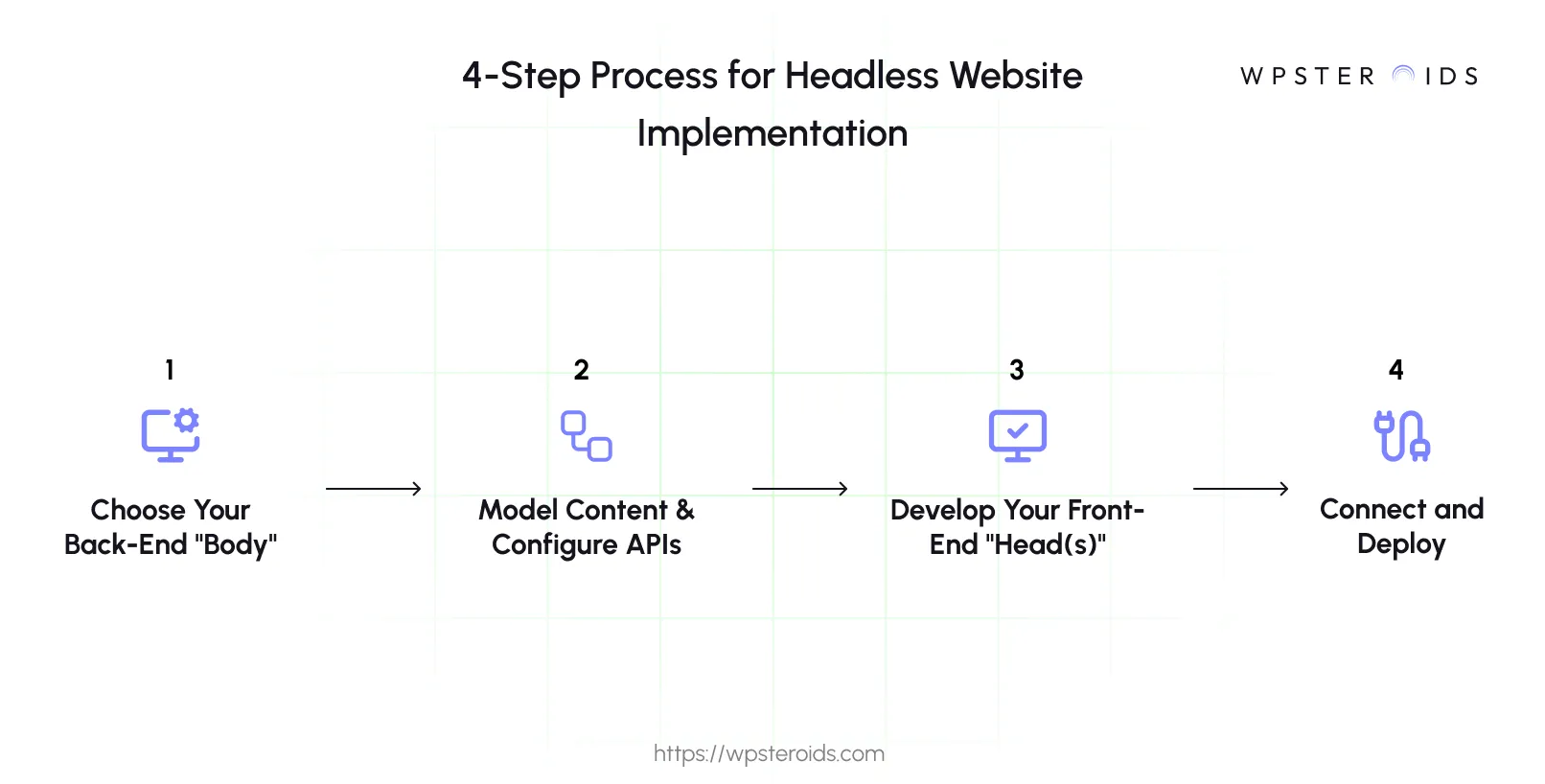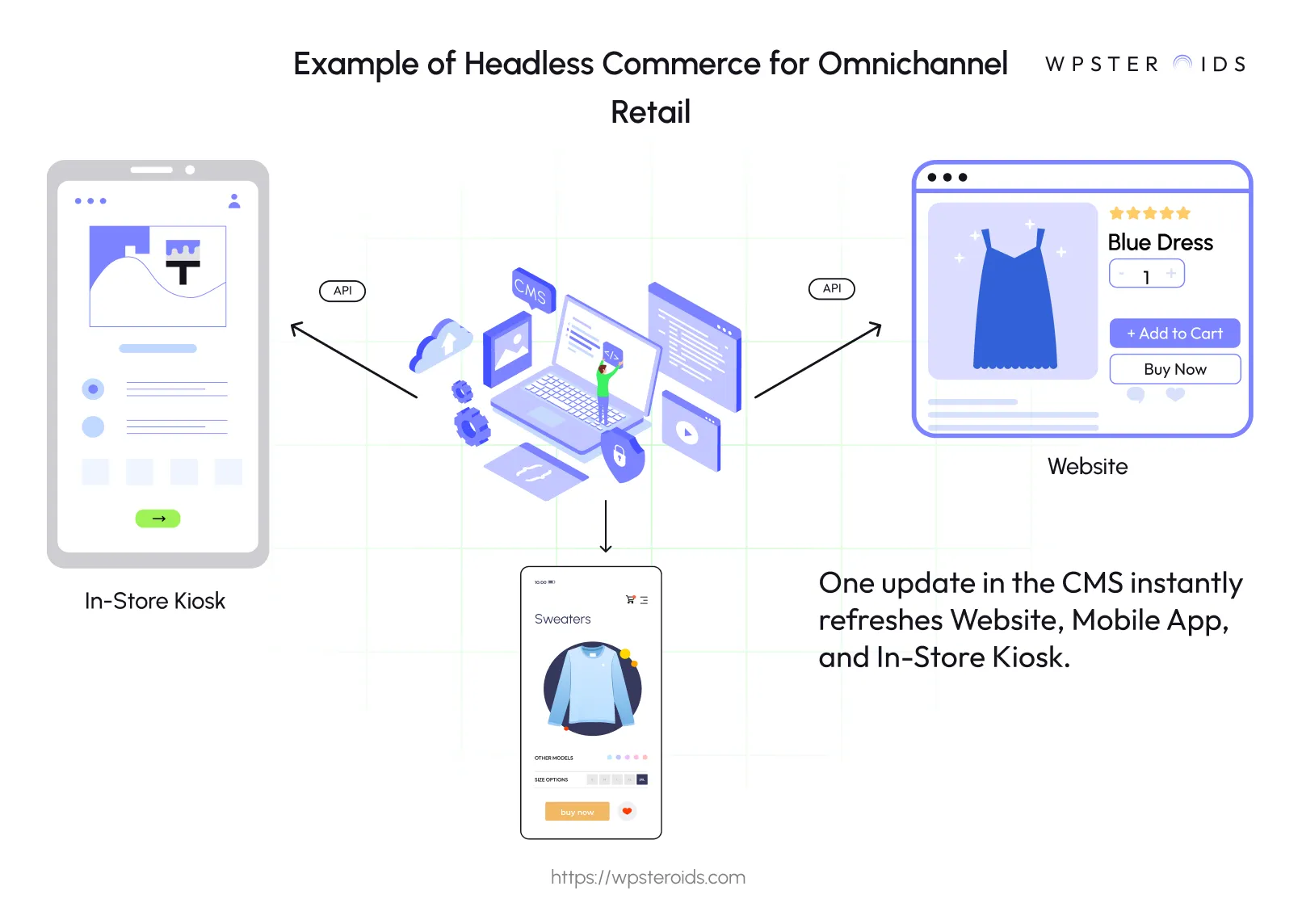
Headless CMS scales and improves WPWhiteBoard’s content distribution, flexibility, and personalization
Swarup Gourkar
Let's start with a direct question: Is your current website a bottleneck?
You know the feeling. Your marketing team wants to launch a campaign on a new device, but the development team says it will take months to adapt the site.
Your e-commerce pages load slowly, especially during traffic spikes, and you suspect you are losing customers.
You are trying to build a modern, omnichannel experience, but you are constantly fighting a clunky, monolithic system that holds your business back. If this sounds painfully familiar, you are in the right place.
You keep hearing the term "headless", and you suspect it is the solution. You need a clear answer to what is headless website and not a lecture full of developer jargon.
This structure allows your content to be centrally managed and delivered via an API to any platform—from a website and mobile app to an IoT device—ensuring faster performance and superior flexibility.
In simple terms, instead of being trapped in a single website design, your content is free to be displayed beautifully and consistently anywhere your customers are.

To understand the headless website's meaning and its decoupled architecture, let's use a simple, real-world comparison.
A Traditional CMS website is like a restaurant with a fixed dining room. The kitchen (your back end) and the seating area (your front end) are physically connected in the same building.
You can only eat the food (your content) on their plates (the website design) inside their restaurant (the single website).
You cannot easily get their food delivered to your home, your office, or a catered event. Everything is bundled into one, inseparable experience.
A Headless CMS is like a high-end, delivery-only kitchen. This state-of-the-art kitchen (the back-end CMS) focuses on one thing: preparing the best possible food (your content). It has no dining room.
Instead, it uses a highly efficient fleet of delivery drivers (the APIs) to send that food anywhere it is needed—to a customer's home (a website), their office (a mobile app), a pop-up event (a digital kiosk), or a partner's food truck (a smartwatch app).
The kitchen does not care what the "dining room" looks like; it just provides high-quality content on demand.
This simple shift from a fixed restaurant to a flexible delivery kitchen is the essence of the headless model. Your content is the premium product, ready to be sent anywhere your audience is.
When you go headless, your back-end content management system does not generate a webpage; it simply holds the content. When a user opens your mobile app (a "head"), the app asks the back end for the necessary content via an API call.
The back end delivers the raw content, and the mobile app displays it perfectly for that specific device. The same process happens for your website, your smartwatch app, and any other channel you can imagine.
This fundamental separation is the game-changer. It transforms your content from being trapped within a single website into a flexible, centralized resource that can be deployed anywhere, instantly.
Understanding the architecture is one thing, but as a leader, you need to know the strategic "why". What are the tangible business outcomes that justify this shift?
The decision to adopt a headless model is not just a technical upgrade; it is a strategic move that delivers clear advantages for headless websites in flexibility, security, and speed.
The single greatest advantage the headless website architecture offers is the freedom to deliver content anywhere. In a traditional model, your content is locked into your website's design.
In a headless world, you embrace a "create once, publish everywhere" philosophy. Your team manages a single source of truth for all content in the back end.
That content can then be seamlessly delivered to:
This makes your omnichannel content strategy a reality, not just a buzzword.
For any tech leader, security is non-negotiable. A headless architecture provides enhanced security by its very nature.
By decoupling the front-end presentation layer from the back-end database and content management tools, you significantly reduce your attack surface. Your back-end CMS can be locked down and made inaccessible from the public internet.
The only way in is through secure API calls. This means common threats targeting the administrative layer of a traditional CMS website are effectively neutralized.
Because the front end and back end are separate, your teams can work independently.
This approach to headless website development unleashes front-end developers from the limitations of a monolithic CMS's templating engine, free to use modern frameworks like React, Vuejs, etc. to build fast, engaging user experiences
Back-end developers can concentrate on building a rock-solid, scalable, and secure content repository.
This parallel workflow shortens development timelines, allowing you to get new features and experiences to market faster than your competition.
The real competitive advantage of going headless comes from the organizational shift it enables. The headless website architecture is a catalyst for breaking down traditional, siloed teams.
Instead of organizing around technology stacks ("front end" vs. "back end"), you can realign your talent into cross-functional squads built around customer journeys or business goals.
This new way of working is what truly unlocks the speed and agility promised by headless. By structuring your teams to match your decoupled architecture, you empower them to own their part of the customer experience from end to end.
Ultimately, every technology decision must answer to the bottom line. The operational efficiencies gained from a headless approach translate directly into a measurable return on investment.

For years, the monolithic approach was the only way to build a website. But these all-in-one systems are struggling to keep up.
The fundamental problem with a traditional CMS website is that it is a "coupled" system where the front end and back end are fused.
This tight integration is the source of significant pain, from slow and risky changes to inefficient scaling and inflexible content delivery.
This rigidity is why so many ambitious brands feel like they are running in quicksand. They have the vision for incredible digital experiences, but their underlying technology is holding them hostage.
When you compare them side-by-side, the advantages of a modern, decoupled approach used by headless sites become incredibly clear.
| Feature | Traditional Website (Monolithic) | Headless Website (Decoupled) |
|---|---|---|
| Architecture | Coupled: Front end and back end are a single unit. | Decoupled: The headless website architecture. |
| Flexibility | Limited to the platform's themes and templates. | Unlimited: Use any front-end technology. |
| Omnichannel | Difficult: Content is trapped in the website design. | Native: Content is delivered via API to any channel. |
| Performance | Slower: Full page rendering on the server. | Faster: Static hosting and dynamic API calls. |
| Developer Experience | Restrictive: Forced to work within the monolith. | Empowering: Freedom in headless website development. |
| Scalability | Inefficient: Must scale the entire application at once. | Efficient: Scale front end and back end independently. |
A headless architecture is a powerful strategic tool, but it is not a universal solution for every business.
The decision should be driven by your specific business goals, your team's capabilities, and your vision for the future.
You should strongly consider investing in a headless site when your strategy aligns with one or more of these key drivers:
For online retailers, the conversation often shifts specifically to headless commerce. You should prioritize a headless commerce architecture if:
A traditional, monolithic CMS website is still a perfectly viable option in a few specific cases:
If you are leaning towards headless, there are two critical questions you need to answer: how do you keep it secure, and how do you choose the right back end?
Moving to a decoupled architecture fundamentally changes your approach to security and maintenance.
Your back-end CMS is no longer directly exposed to the public internet; you can place your content repository behind a firewall, making it invisible to malicious actors.
This dramatically shrinks your attack surface.
Instead of one massive, high-risk update, maintenance in a headless world is about managing individual components. If you use a modern SaaS back-end CMS, the provider handles the vast majority of security patches and uptime.
Your single most important decision is choosing the right Content Management System (CMS). The market for headless content management is diverse, but most options fall into one of three main categories.
The right choice depends entirely on your team, budget, and goals. Ask these questions: Who will be creating content? What is your development team's expertise? What are your scalability and performance needs?

Understanding the "what" and "why" of headless is crucial, but for a leader, the "how" is where strategy meets reality. The journey to a headless implementation generally follows four key phases.
The flexibility of the headless website architecture makes it a powerful solution. Here are common scenarios where it is the clear winner:

We have covered a lot, from the core definition of a headless website to its architecture and strategic advantages. This is a fundamental shift in how modern digital experiences are built.
When you adopt headless, you are making a conscious decision to prioritize speed, security, and flexibility. You are unchaining your content from a single presentation layer and preparing your business for a future where customers will interact with you on devices that do not yet exist.
But if there is one key takeaway, it is this: the most powerful competitive advantage of a headless architecture is not just technological, it is organizational.
It unlocks a new level of agility, allowing your teams to innovate in parallel, test new ideas faster, and deliver value at a pace your competitors, stuck on monolithic platforms, simply cannot match.
This is how you build a resilient, future-proof foundation. You now have the clarity to move beyond the buzzwords and have a confident, strategic conversation with your team.
Ready to explore how a headless architecture can accelerate your business? Book your discovery call today.
How do you tell if a website is headless?
For a non-developer, the best clue is the user experience. Headless websites often feel incredibly fast and fluid. When you click to navigate, the page does not do a hard, white-screen refresh. Instead, content areas often update instantly. A developer can confirm this by inspecting whether the site is making API calls to fetch content as JSON data.
What is the difference between a headless and a headed website?
A "headed" website is another term for a traditional CMS website. The key difference is the coupling between content and its presentation. In a headless site, the front end and back end are fused. To answer what a headless website is, it's one where they are completely separate ("decoupled").
What is a headless website example?
Many leading brands offer a great headless website example. Nike uses headless commerce to create immersive shopping experiences. Netflix uses a headless model to deliver its media library to hundreds of different devices. Smashing Magazine, a popular publication for web developers, uses a headless CMS website to deliver its articles with lightning-fast speed.
